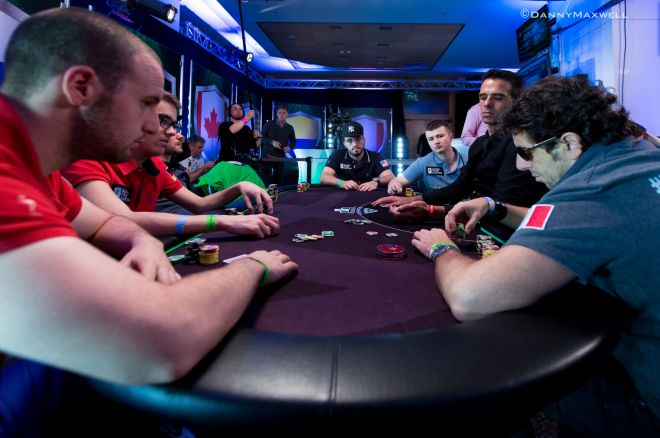How to Beat Loose-Passive Poker Players

While good, aggressive opponents can be extremely difficult to play against, passive players sometimes can be equally as frustrating to lock horns with in both tournament poker and cash games. It often seems like these so-called “calling stations” are impossible to shake from a pot and that they suck out with a weird two pair all the time (they don’t, by the way), becoming a royal pain in the backside as a result.
In fact, loose-passive players should be welcomed to your game with open arms because they are as close as you will ever get to a goldmine or money printing press seated at your table. These fishy foes are easy to identify and once you have, you can take them on and take their money.
They’ll be found limping into more than their fair share of pots, calling any preflop raises that come after they’ve entered a pot. They then often will proceed to check-call all the way to the river or check-fold, only raising if they have an ultra-strong hand. Loose-passives are always on the lookout for a reason to call — bear that in mind for a little later on.
You’d think that these characteristics would make them the perfect opponents to play against, and you’d be right. But you’d also be surprised to see how many poker players struggle to beat them.
More often than not, the root of the frustration associated with playing against passive players is self-inflicted. By that I mean whoever is moaning about their bad luck or “how the fish always has it” often only has themselves to blame for handing over their stack or a large percentage of it.
The biggest culprits on this front are not listening to the betting or attempting to bluff a loose-passive off a pot. If one of these players has called a raise preflop, called a continuation bet on the flop, and then called a second barrel on the turn, there is no way on this planet that the player is folding on the river, regardless of how the board texture is — third pair is the mortal nuts for these guys!
So how do we beat these impossible-to-bluff types? One way is to use their own style of play against them.
Most of your money in poker will come from value betting. Good players don’t pay off as many value bets as weaker players, but loose-passives love calling value bets. It is this fact alone that makes them super profitable to play against.
If you have a strong hand, then make sure you’re extracting the maximum value from it. You can alter your bet sizes to assist you here because to a loose-passive a two-thirds-pot bet is just as easy to call as a half-pot bet. Bet the flop, bet the turn, and bet the river unless they’ve shown any indication of strength.
Another tip is to isolate these players preflop so that you can have them all to yourself. Should a loose-passive open-limp, stick in a raise to force any players yet to act out of the pot. This isolating of the player can be done with a wider range of hands than usual, because your implied odds are much greater than they would be against a strong, aggressive player.
You could even make your isolating raise larger than usual — or your blind-stealing raise if you have a loose-passive in the blinds — because the player is still likely to call and you’ll have positional advantage for the rest of the hand in a bloated pot. (And such a player is almost never going to get tricky postflop either — bonus!)
How you approach loose-passives on later streets comes down to any reads or notes that you may have. If they float the flop a lot — that is, call with nothing or a weak hand — then you can fire a continuation bet with a higher frequency with your good hands and check back weaker holdings.
When they call your flop bet and a turn bet, you need to start worrying about your own hand strength — because they won’t be! It is here that a lot of players go wrong and they continue stubbornly to bet into an opponent who has shown no inclination to fold.
Stop bluffing the loose-passives, respect any aggression they show, and value bet them out of the water, and you should do just fine.
Get all the latest PokerNews updates on your social media outlets. Follow us on Twitter and find us on both Facebook and Google+!








